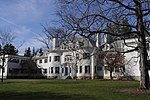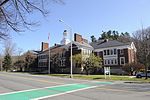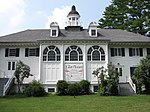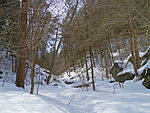Red Lion Inn (Stockbridge, Massachusetts)
1773 establishments in the Province of Massachusetts BayHistoric Hotels of AmericaHotel buildings completed in 1897Massachusetts Registered Historic Place stubsNational Register of Historic Places in Berkshire County, Massachusetts ... and 1 more
Use mdy dates from August 2023

The Red Lion Inn in Stockbridge, Massachusetts is one of the Historic Hotels of America of the National Trust for Historic Preservation. The main building of the inn offers 82 guest rooms. In addition to the inn itself, the hotel operates nearby guest houses and other properties as alternative lodging options.
Excerpt from the Wikipedia article Red Lion Inn (Stockbridge, Massachusetts) (License: CC BY-SA 3.0, Authors, Images).Red Lion Inn (Stockbridge, Massachusetts)
Main Street,
Geographical coordinates (GPS) Address Nearby Places Show on map
Geographical coordinates (GPS)
| Latitude | Longitude |
|---|---|
| N 42.281944444444 ° | E -73.311944444444 ° |
Address
Red Lion Inn
Main Street 30
01263
Massachusetts, United States
Open on Google Maps











